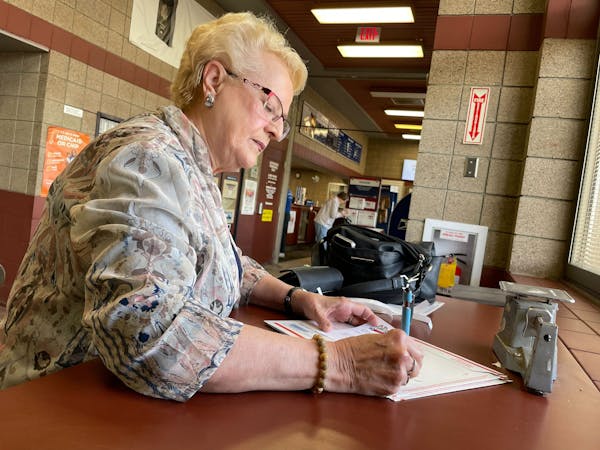Not long before Christmas, as the pandemic was taking a devastating toll in rural Iowa, Rebecca Tinti was visiting neighbors who had fallen ill.
At the family's farm, she found seven of them, including a newborn baby, bedridden with sickness, leaving a 6-year-old girl to take care of everyone else. Tinti stepped in, but she couldn't avert tragedy.
"The mister had been waiting on the rest till he had a relapse and kept on getting worse, till he died a week later," she wrote in a letter dated January 1919. "I stayed till the funeral, which was the day before Christmas."
Tinti's letters are now in the hands of her goddaughter's daughter Ruth M. Lux, 72, of Lidderdale, Iowa. Lux has dozens of old family letters, which were passed down from her mother and her grandmother.
"I call my house the Lidderdale branch of the National Archives," she said.
Those letters — updates about corn harvests and slaughtered hogs, interspersed with reports of illness and death — are dispatches from the domestic front of a pandemic in which millions of Americans were sickened and 675,000 died, among at least 50 million deaths worldwide. It has been attributed to an H1N1 virus that originated in birds.
That pandemic, like the coronavirus today, seemed to roll across the U.S. in waves. But the national conversation around private family gatherings appeared to have been less charged in 1918 than it is today, as many weary from months of restrictions bristle at guidance from health agencies to stay home.
"Hundreds of thousands of people lost loved ones," said J. Alexander Navarro, a medical historian at the University of Michigan and an editor of the online Influenza Encyclopedia. "But by the time of Thanksgiving, there really wasn't much debate about whether or not they should get together."
At the time, another major event was stealing newspaper headlines: the end of World War I. Soldiers were returning to their homes, and the risk of infection did not stop people from celebrating the Allied victory in person.
Other celebrations were more subdued. For many people in the U.S., the Christmas holiday was centered around the home, said Penne L. Restad, a historian with the University of Texas at Austin.
This year, with coronavirus cases rising and health professionals girding for a surge in infections associated with holiday travel, Lux plans to stay home alone on Christmas. But her family letters from a century ago told of gatherings, as well as grave diggings.
"I was for three weeks busy doing the neighbors' chores and burying the dead," one relative, John Tinti, wrote in February 1919. "I helped lay away more people this winter than I ever did in all my life."

House quickly rejects Rep. Marjorie Taylor Greene's effort to remove Speaker Johnson
What will Utah's NHL team be called? Here are 20 options

Biden says US won't supply weapons for Israel to attack Rafah, in warning to ally

